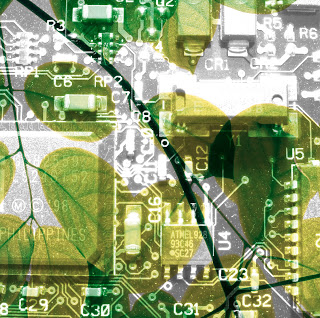Many network environments have redundant gear that is always powered-on just waiting to be needed. Day-in and day-out this gear hums along burning electricity without providing any service other than insurance. Chalk it up as a cost of providing 99.99%-plus uptime; redundancy is a fact of life. This practice is common in many offices and labs, but most striking in data centers, which use vast amounts of electricity despite utilization rates in the single digits to low teens. Its increasing prominence as an issue can be seen in this recent New York Times article.
Work on improving data center efficiency has typically been based on improvements in cooling or lower-power processors. More recently utilization improvements have been promised with virtualization and consolidation into clouds. But these efforts aren’t keeping pace with the voracious power needs of more and more data centers and the increasingly universal demand for 100% availability for all services. We expect to be able to click at Like button at any time of day as much as we expect our call to go through from one office to another during working hours. Saving our vacation photos to the cloud is treated as critically as accessing the SAS package that is the backbone of our business.
Why the reluctance to power down backup machines instead of running them constantly? Easy. It’s the long held fear that if you turn it off, it might not turn back on. And when you are talking about powering-down multiple devices, verifying that they came back on as expected would be a tedious task that might even wipe out the savings.
Using the power of local management to reduce power consumption
Local Management from Uplogix has the potential to solve some of the issues with powering-down devices when they aren’t needed. It addresses the key considerations that keep organizations from only using the computing power they really need, when they need it:
- Flipping the switch
The key to local management is deploying an intelligent device (the Local Manager, or LM) that connects directly to managed devices the same way a technician would. This console connection is independent of the network and highly reliable. The other side of the equation is integration with a managed power source. The LM can issue proper shutdown commands to the device and instruct the power strip to turn off power. At this point, power use decreases, cooling requirements go down and the green savings start going up. When it’s time to power up the device, the LM flips the switch through the power strip, boots-up and begins monitoring the device.
- Confidence that devices will come back
It’s the fear of failure that leads to never turning off devices. With Uplogix, the LM can verify device states and report into central monitoring tools showing exactly what’s going on in the operation. If a device does not boot up correctly, Uplogix can take automated steps right out of the run book to attempt a recovery without having to bring in a technician. Recovery techniques could range from clearing modules to ROMMON recovery, reinstalling the previous configuration to the old standby – turn it on and off again. The vast majority of issues are solved using the first basic steps in the run book. For those that aren’t, technicians will be notified of the situation, and they won’t have to start at square one because the first steps will have already been tried and failed.
- Automating the process
One of the keys to making automation truly useful is to not have to think about turning it on and off. The flexibility of the Local Management platform allows for custom rules and monitoring, so users can configure actions to their own needs. Maybe it’s a matter of off-hours, or low-usage times, or maybe looking for a minimum amount of traffic to be used as a trigger for implementing a shut-down or conversely, a power-up process when usage increases.
Don’t wait for tomorrow, get greener today
One of the exciting things about this solution is that it’s available today using core functionality of the Local Management platform. One customer case study already demonstrating this functionality would be a network test lab at a major IT installation for one of the US Armed Services. They use Uplogix to create rules and implement actions that turn off network gear late every evening and bring power on and devices back up early the next morning. These devices are also reset to a baseline configuration each morning.
This application is really not that much different from a data center where they know their peak usage times, or a corporate cloud environment that might really only be accessed during working hours. Running every device flat out all the time doesn’t make sense. And when even a single data center can draw more power than a medium-size town, implementing a relatively simple solution like turning off a switch — with confidence that you’ll be able to turn it back on — could have a big impact.





